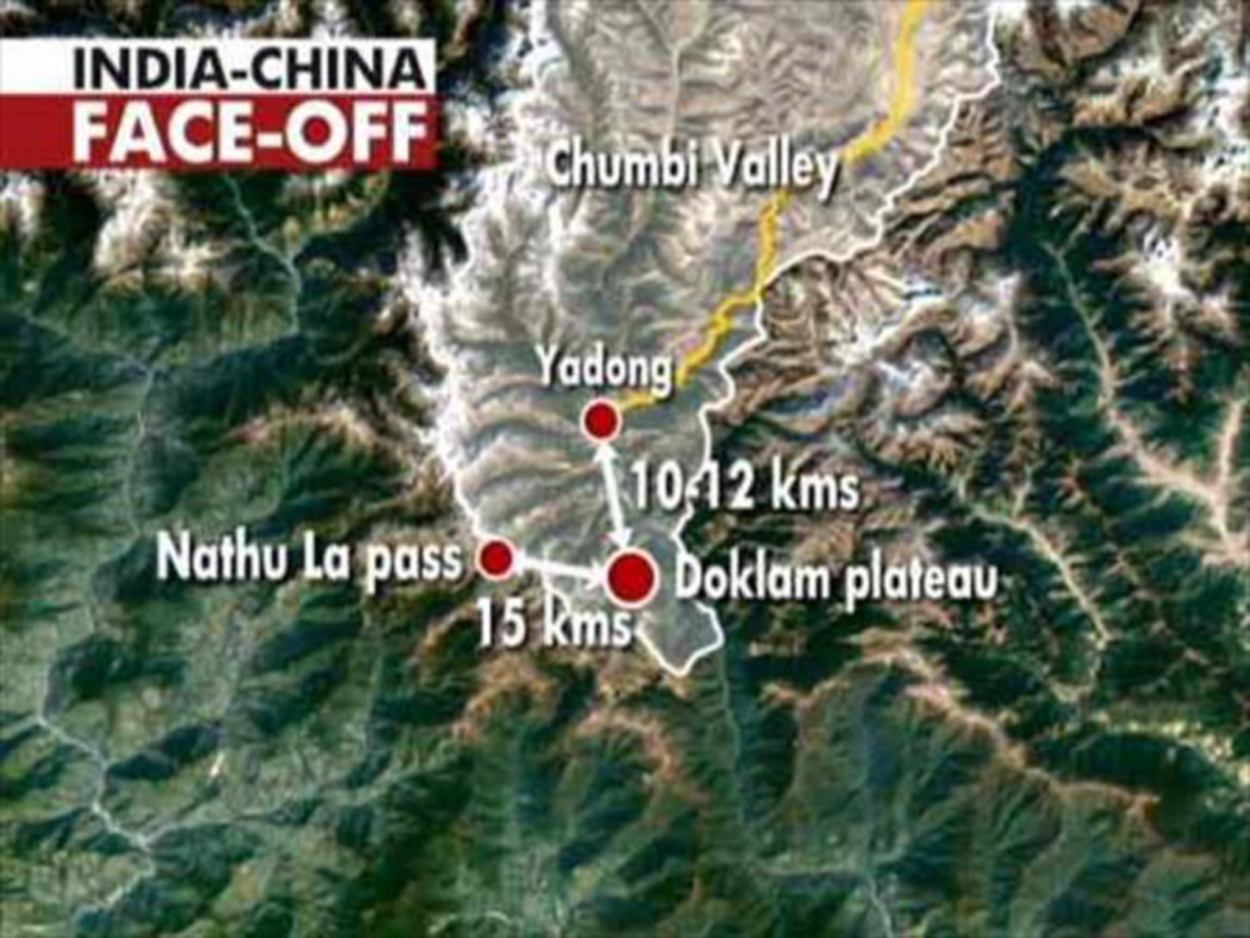By M.K. Bhadrakumar
The denouement of the dangerous India-China military standoff in Doklam near the Sikkim border is hard to predict. But on the diplomatic and geopolitical plane, one definite outcome of the standoff is going to be that the South Asian and Indian Ocean region will witness big-power rivalry in a way that eluded it even in the high noon of the Cold War era.
Beijing’s South Asia diplomacy has hitherto focused on creating underpinnings for its expanding economic interests in trade, investment and connectivity. Even its Pakistan policies, which were traditionally India-centric, had distinctly begun to transform as a template of the Chinese global strategy devolving upon the Belt and Road Initiative. But this may be about to change. China’s South Asian policies may now come to acquire for the first time a pronounced anti-India thrust on a regional scale.
Arguably, such a shift could have been expected ever since India began wading into the South China Sea disputes with gusto over the past few years. The Doklam standoff has become a defining moment. An editorial in the Global Times newspaper on Friday gave notice that since India had been harming China’s interests, Beijing was now left with no option but to retaliate. The editorial blasted India’s neighborhood policies in South Asia: (This editorial was sent to readers. NH)
India’s overall strength is far from that of a major power, but its hegemonic ambitions are world-class. It forcefully annexed Sikkim in the past and continues to violate Bhutan’s sovereign rights and to interfere in Nepal’s foreign policies.
India’s regional hegemonism has expanded to harm China’s national interests, forcing Beijing to take action.… It’s necessary for China to spread this initiative to South Asia.… China is also capable of influencing how India is perceived by these countries. It’s time for India’s hegemony in South Asia to come to an end.… The Doklam standoff is just the start. The world needs to see what India has done in South Asia.
The Communist Party of China tabloid has thus declared open war with India in the diplomatic arena. The rhetoric harks back to the 1960s and ’70s. Perhaps what is galling for China is that on top of India’s assiduous courting of Vietnam and quasi-alliance with Japan to push back at China’s assertiveness in the South China Sea, India has raised the bar by challenging its “territorial sovereignty” over Doklam. It is a blunt message to New Delhi that any trespass into China’s core interests will come at a price.
The advent of a “great game” on the South Asian chessboard may provide India’s small neighbors with more space and wherewithal to negotiate much harder deals with New Delhi than they ever were capable of striking during the past seven decades. In strategic terms, China seems to think that South Asia’s Gulliver can be tied down by the region’s Lilliputians. The old hackneyed thesis of the “string of pearls” seems to be coming true.
A fundamental rethink in India’s neighborhood policies may be becoming necessary. Its past obsession with creating a sphere of influence in its neighborhood has become untenable. At any rate, the reported move by Kathmandu to demand the rollback of powers vested in the Indian Embassy to decide unilaterally on “small projects” in Nepal is yet another wake-up call that times have changed and there is high sensitivity about perceived Indian hegemony.
India’s best option will be to fall back on its soft power aimed at creating rings of constructive engagement that make the smaller neighbors stakeholders in friendship and cooperation with India. But that will require a change in the mindset and might only grudgingly yield results. And India will need quick results, too. What a flawed policy judgment it was that India decided to boycott (and derail) the South Asian Association for Regional Cooperation summit in Islamabad two years ago to spite Pakistan! New Delhi virtually mothballed the SAARC forum. Yet despite all of its inadequacies, SAARC did serve a useful purpose in facilitating seamless interactions.
In today’s troubled times, the SAARC kinship would have worked to the advantage of Indian diplomacy. Against the above backdrop, the visit by Sushma Swaraj, India’s external affairs minister, to Kathmandu last week may be seen as the incipient sign of a rethink taking place in the Indian policies. Course correction in policies takes place at glacial pace in the Delhi durbar. But Swaraj is also planning to travel to Dhaka next month, hinting at a heightened level of awareness about India’s South Asian neighbors.
Without doubt, Swaraj’s advice to Nepal’s Madhesi parties to return to mainstream politics and to participate in the upcoming local elections in that country presages a fantastic shift in the Indian policies. (The shift is India fell on its knees. NH) India has apparently decided to change course and encourage the Madhesi minority groups of Indian origin to look toward Kathmandu rather than Delhi to secure their regional interests through political empowerment within that country’s democratic framework.
This signifies a radical departure from the past policy of the Indian establishment using the Madhesi ethnic problem as a trump card to pressure the leadership in Kathmandu to curb China’s growing presence in that country. (India was instigating the Madhesi people and parties to tow Indian interests against Nepalese interests. With new policy India fell on it nose. NH)
Significantly, Chinese Vice-Premier Wang Yang (who co-chairs the high-profile China-US Comprehensive Economic Dialogue and is a key figure in the Chinese leadership) is visiting Nepal this week on the second leg of a regional tour, which took him also to Pakistan. This will be Wang’s second interaction with the Nepalese leadership regarding the Belt and Road Initiative in the past three-month period.
Wang met with Nepali Deputy Prime Minister Krishna Bahadur Mahara in Beijing in May. Beijing may be firing the first salvo in its South Asian diplomacy to undercut India’s influence. All signs are that China could be preparing a Belt and Road package for Nepal that India cannot possibly match. It cannot be ruled out that President Xi Jinping could be scheduling his long-awaited visit to Nepal.







